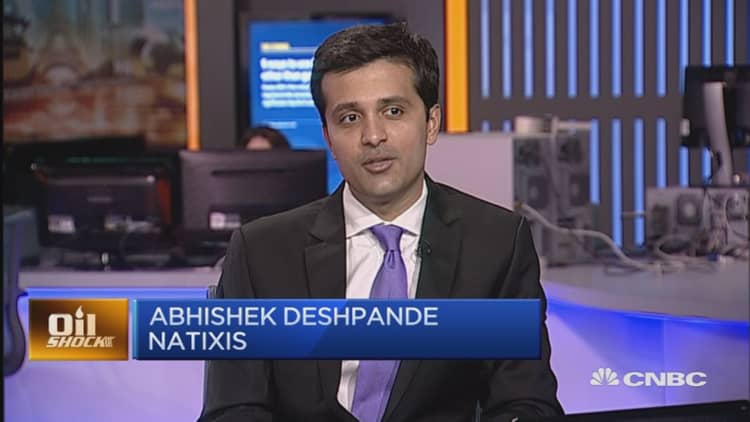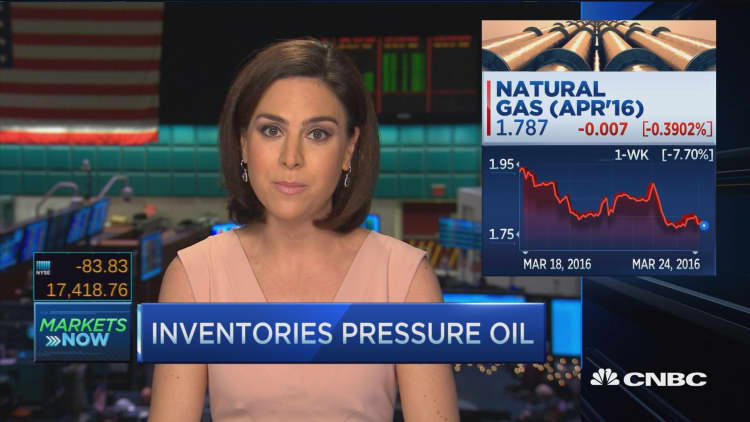


A recent rally in oil prices to up and around $40 a barrel has prompted a degree of optimism in some sectors that prices had bottomed out – but not for long.
Oil prices have rallied over the last two months on hopes that a rebalancing of supply and demand in the wider global oil industry was filtering through into markets. Benchmark Brent crude futures are currently trading at $39.56 and West Texas Intermediate (WTI) at $38.78 - a far cry from the low point earlier this year of just below $27 a barrel but, for Brent at least, down 4.7 percent from a week ago.
"I'm already questioning what caused the rally, to be honest," Abishek Deshpande, oil and gas analyst at Natixis told CNBC on Tuesday.
"We are still quite cautiously bearish (despite) that rally that we saw in the last two months which was very much investor-driven and not fundamentals-driven so we're still quite cautious on that fact."
Deshpande said the rally had been driven by both institutional and retail investors and that "we are still seeing increased positions week on week and that seems to still support oil prices."
Deshpande believed that investors "got a little over-excited" about the news of a potential meeting of oil producers and following U.S. oil companies signaling a decline in output this year, which would help reduce supply. "All of these factors really helped them to take bullish bets and that has supported prices."
Technical analysts were bearish about the outlook for oil, with Barclays analysts also issuing a note on Monday warning that "investor liquidation of long positions being built up in recent weeks" had the potential to cause oil prices to drop 20-20 percent, meaning oil prices could fall to the low $30s.
Robin Griffiths, chief technical strategist at The ECU Group, also told CNBC on Tuesday that technical charts suggested that oil prices could dip back to pre-rally lows. "We're likely to spend a year or more in a range between about $20 and $30. Forget being up to $50 (a barrel)…Certainly just looking at the chart, I would expect to re-test the lows we've just rallied from and the rally was mainly short-covering," he added.
Faith fading fast
As faith in the oil rally begins to fade, there are also expectations of further increases in U.S. stockpiles, signaling that demand is not as healthy as previously believed.
Analysts surveyed Monday by Platts, a provider of energy and commodities research, expect crude stocks to have risen a further 2 million barrels last week.
"With storage still looking profitable and refinery utilization likely dipping, U.S. crude oil stocks are expected to show a build this week, pushing further into record-high territory," Platts said on Monday in preview analysis ahead of this week's U.S. Energy Information Administration (EIA) data on oil inventories.
Oil's recent rally was given a helping hand by news that major oil producers from both OPEC and non-OPEC countries are due to meet this month to discuss a possible output freeze. However, there is skepticism that any cut to production will be agreed between rival producers.
"If the Doha meeting comes up with absolutely no freeze cuts or no reason to believe that markets will rebalance towards the third/fourth quarter of this year then of course investors are likely to get out it (the oil trade) as soon as possible," Natixis' Deshpande said.
The ECU Group's Griffiths was also unconvinced that any OPEC/non-OPEC deal could bring long-term stability to global oil markets.
"Stability in the Middle East is a long way of0f from being delivered. A deal is a deal but all it takes is a little missile on the wrong part of the oil fields (to upset the oil price)," he said.


